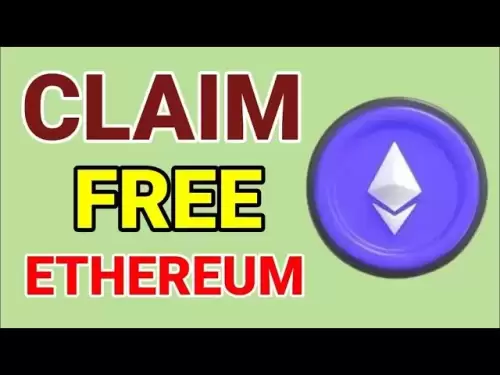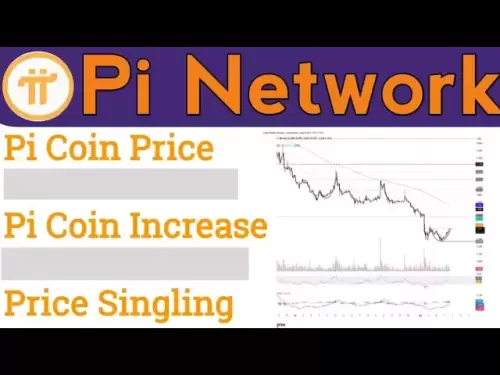-
 Bitcoin
Bitcoin $116900
0.00% -
 Ethereum
Ethereum $4280
5.48% -
 XRP
XRP $3.265
-1.45% -
 Tether USDt
Tether USDt $1.000
-0.01% -
 BNB
BNB $807.0
1.41% -
 Solana
Solana $183.1
2.93% -
 USDC
USDC $0.9999
0.00% -
 Dogecoin
Dogecoin $0.2440
6.50% -
 TRON
TRON $0.3357
-0.88% -
 Cardano
Cardano $0.8178
2.63% -
 Hyperliquid
Hyperliquid $44.13
7.45% -
 Chainlink
Chainlink $21.39
9.09% -
 Stellar
Stellar $0.4524
-0.84% -
 Sui
Sui $3.957
2.13% -
 Bitcoin Cash
Bitcoin Cash $572.7
-2.54% -
 Hedera
Hedera $0.2671
1.54% -
 Avalanche
Avalanche $24.77
4.17% -
 Ethena USDe
Ethena USDe $1.001
0.02% -
 Litecoin
Litecoin $122.3
-1.94% -
 Toncoin
Toncoin $3.432
2.26% -
 UNUS SED LEO
UNUS SED LEO $9.007
0.49% -
 Shiba Inu
Shiba Inu $0.00001396
5.26% -
 Uniswap
Uniswap $11.09
1.64% -
 Polkadot
Polkadot $4.155
4.57% -
 Dai
Dai $1.000
0.00% -
 Pepe
Pepe $0.00001253
5.11% -
 Cronos
Cronos $0.1588
2.67% -
 Bitget Token
Bitget Token $4.512
0.05% -
 Monero
Monero $275.0
0.64% -
 Ethena
Ethena $0.7527
15.10%
How to trade KAIA with leverage? What should I pay attention to in risk control?
Trading KAIA with leverage can boost returns but also heightens loss risks; choose a secure platform, understand leverage and margin, and use stop-loss orders for risk control.
May 07, 2025 at 02:07 pm
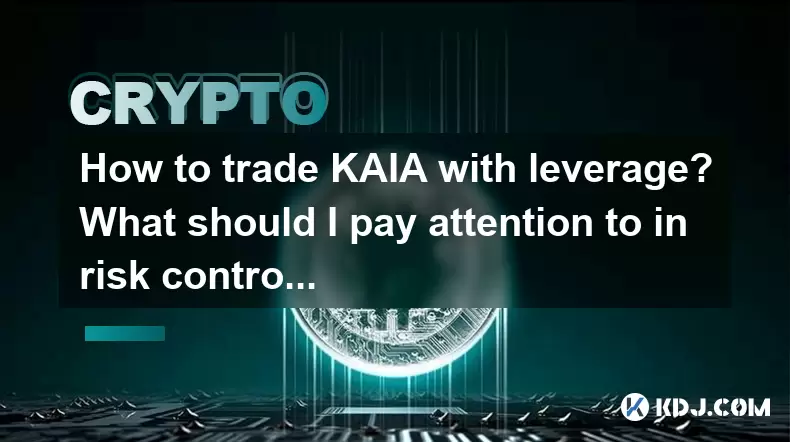
Introduction to Trading KAIA with Leverage
Trading KAIA with leverage can significantly amplify your potential returns, but it also increases the risk of substantial losses. KAIA, a cryptocurrency, can be traded on various platforms that offer leverage. Leverage allows traders to borrow capital to increase their trading position beyond what would be possible with their available funds. However, it's crucial to understand the mechanics of leveraged trading and the associated risks before diving in.
Choosing a Platform for Trading KAIA with Leverage
When you decide to trade KAIA with leverage, the first step is to choose a suitable trading platform. Not all platforms offer the same level of leverage or the same trading conditions for KAIA. Here are some steps to select the right platform:
- Research and Compare: Look for platforms that specifically support KAIA trading with leverage. Compare the leverage ratios they offer, the fees they charge, and the user interface.
- Check Security Measures: Ensure the platform has robust security measures in place to protect your funds and personal information.
- Read Reviews and Testimonials: Look for user reviews and testimonials to gauge the reliability and user experience of the platform.
- Demo Account: If possible, use a demo account to practice trading KAIA with leverage before committing real funds.
Understanding Leverage and Margin
Leverage is essentially borrowing money to increase your trading position. For instance, if you use 10x leverage, you can control a position worth 10 times your actual investment. However, this also means that any losses are magnified by the same factor.
Margin is the amount of your own money that you need to put up to open a leveraged position. It acts as a security deposit to cover potential losses. If the market moves against your position, you might receive a margin call, requiring you to deposit more funds to maintain your position.
Steps to Trade KAIA with Leverage
To trade KAIA with leverage, follow these detailed steps:
- Open an Account: Sign up on the chosen trading platform. Complete the necessary KYC (Know Your Customer) verification processes.
- Deposit Funds: Fund your account with the required currency. Ensure you have enough to cover the margin requirements for your intended position.
- Select KAIA: Navigate to the trading section and select KAIA as the asset you wish to trade.
- Choose Leverage: Decide on the leverage ratio you want to use. Remember, higher leverage increases both potential gains and risks.
- Place an Order: Decide whether you want to go long (buy) or short (sell) KAIA. Set your entry price, stop-loss, and take-profit levels.
- Monitor Your Position: Keep an eye on your position and the market conditions. Be prepared to act quickly if the market moves against you.
Risk Control in Leveraged KAIA Trading
Risk control is paramount when trading with leverage. Here are key aspects to consider:
- Set Stop-Loss Orders: Always use stop-loss orders to limit potential losses. A stop-loss order will automatically close your position if the price reaches a certain level, preventing further losses.
- Use Take-Profit Orders: Similarly, take-profit orders can help you lock in gains. Set a target price at which your position will be automatically closed for a profit.
- Manage Your Leverage: Be cautious with the amount of leverage you use. Higher leverage can lead to significant losses if the market moves against you.
- Diversify Your Portfolio: Don't put all your funds into one leveraged position. Diversifying can help mitigate risk.
- Stay Informed: Keep up-to-date with market news and developments that could affect KAIA's price. Being informed can help you make better trading decisions.
Monitoring and Adjusting Your KAIA Leverage Trades
Once you have opened a leveraged position in KAIA, monitoring and adjusting your trades is crucial. Here's how to do it effectively:
- Regular Check-ins: Regularly check the performance of your KAIA position. This includes watching the price movements and any news that might affect KAIA.
- Adjust Stop-Loss and Take-Profit Levels: As the market moves, you might need to adjust your stop-loss and take-profit orders to better reflect the current market conditions.
- Reassess Leverage: If the market becomes more volatile, you might want to reduce your leverage to lower your risk exposure.
- Close Positions: Know when to close your positions, either to lock in profits or cut losses. Don't hold onto a losing position hoping for a turnaround.
Frequently Asked Questions
Q: Can I trade KAIA with leverage on all cryptocurrency exchanges?
A: No, not all cryptocurrency exchanges offer leveraged trading for KAIA. You need to check the specific offerings of each platform to see if they support leveraged trading for KAIA.
Q: What happens if I cannot meet a margin call?
A: If you cannot meet a margin call, your position may be automatically liquidated by the exchange to cover the losses. This means you could lose your entire investment in the position.
Q: Is there a minimum amount required to start trading KAIA with leverage?
A: The minimum amount required can vary by platform. Some platforms might allow you to start with a small amount, while others might require a more significant initial deposit. Always check the specific requirements of the platform you choose.
Q: How can I learn more about KAIA's market trends before trading with leverage?
A: To learn more about KAIA's market trends, you can use various resources such as cryptocurrency news websites, market analysis platforms, and community forums where traders discuss market movements and share insights.
Disclaimer:info@kdj.com
The information provided is not trading advice. kdj.com does not assume any responsibility for any investments made based on the information provided in this article. Cryptocurrencies are highly volatile and it is highly recommended that you invest with caution after thorough research!
If you believe that the content used on this website infringes your copyright, please contact us immediately (info@kdj.com) and we will delete it promptly.
- Shiba Inu, Pepe, and Remittix: A Tale of Memes, Hype, and Real-World Utility
- 2025-08-10 08:30:12
- Ethereum Price, ETH Tokens, Rally Prediction: Is a New All-Time High In Sight?
- 2025-08-10 08:30:12
- XRP, Elon Musk, and Wealth: A Crypto Conundrum
- 2025-08-10 08:50:12
- Retire Early with Crypto: High-Conviction Plays Beyond Bitcoin
- 2025-08-10 08:50:12
- BlockDAG, Render, and Polkadot: Charting the Course for Long-Term Crypto Dominance
- 2025-08-10 08:55:21
- Toncoin's Ascent: Price Predictions and the VERB Strategy Impact
- 2025-08-10 08:55:21
Related knowledge

How to purchase Aragon (ANT)?
Aug 09,2025 at 11:56pm
Understanding Aragon (ANT) and Its PurposeAragon (ANT) is a decentralized governance token that powers the Aragon Network, a platform built on the Eth...

Where can I buy UMA (UMA)?
Aug 07,2025 at 06:42pm
Understanding UMA and Its Role in Decentralized FinanceUMA (Universal Market Access) is an Ethereum-based decentralized finance (DeFi) protocol design...

How to buy Storj (STORJ) tokens?
Aug 09,2025 at 07:28am
Understanding Storj (STORJ) and Its Role in Decentralized StorageStorj is a decentralized cloud storage platform that leverages blockchain technology ...
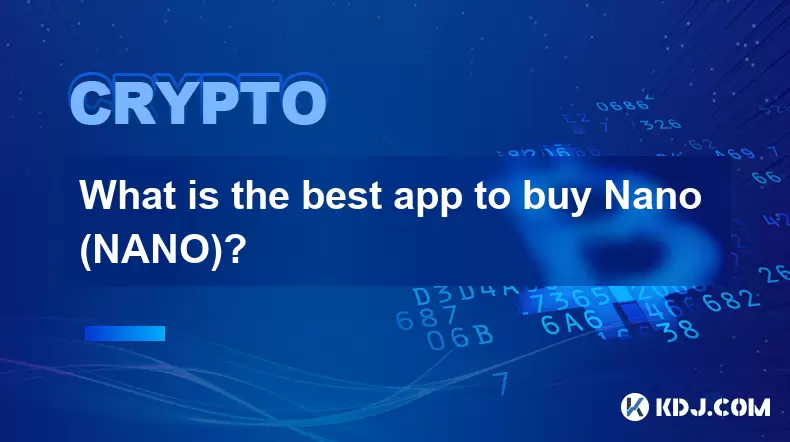
What is the best app to buy Nano (NANO)?
Aug 09,2025 at 03:35am
Understanding Nano (NANO) and Its Unique FeaturesNano is a feeless, instant cryptocurrency designed for fast peer-to-peer transactions. Unlike many ot...
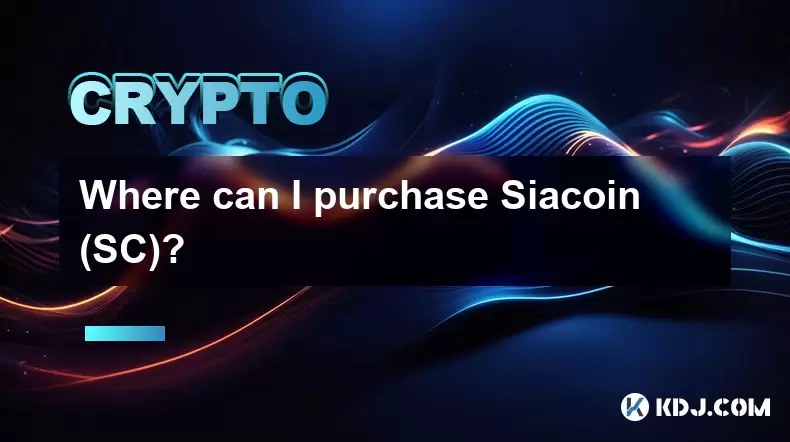
Where can I purchase Siacoin (SC)?
Aug 08,2025 at 11:14am
Understanding Siacoin (SC) and Its Role in the Sia NetworkSiacoin (SC) is the native cryptocurrency of the Sia decentralized cloud storage platform, a...
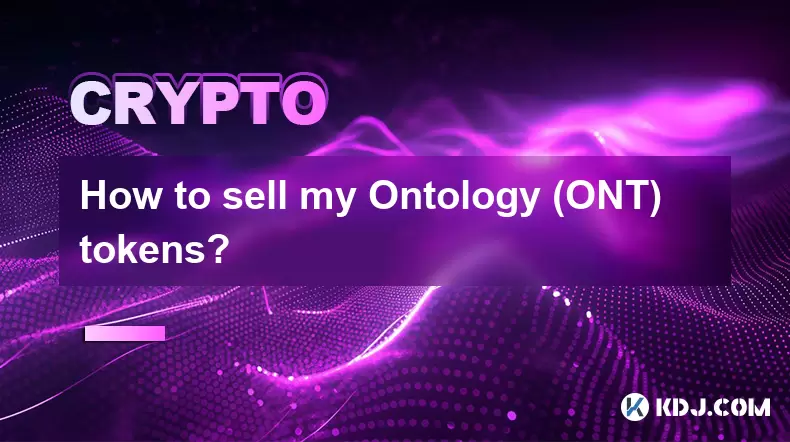
How to sell my Ontology (ONT) tokens?
Aug 09,2025 at 06:08pm
Understanding Ontology (ONT) and Its Trading EcosystemBefore selling your Ontology (ONT) tokens, it's essential to understand the nature of the crypto...

How to purchase Aragon (ANT)?
Aug 09,2025 at 11:56pm
Understanding Aragon (ANT) and Its PurposeAragon (ANT) is a decentralized governance token that powers the Aragon Network, a platform built on the Eth...

Where can I buy UMA (UMA)?
Aug 07,2025 at 06:42pm
Understanding UMA and Its Role in Decentralized FinanceUMA (Universal Market Access) is an Ethereum-based decentralized finance (DeFi) protocol design...

How to buy Storj (STORJ) tokens?
Aug 09,2025 at 07:28am
Understanding Storj (STORJ) and Its Role in Decentralized StorageStorj is a decentralized cloud storage platform that leverages blockchain technology ...

What is the best app to buy Nano (NANO)?
Aug 09,2025 at 03:35am
Understanding Nano (NANO) and Its Unique FeaturesNano is a feeless, instant cryptocurrency designed for fast peer-to-peer transactions. Unlike many ot...

Where can I purchase Siacoin (SC)?
Aug 08,2025 at 11:14am
Understanding Siacoin (SC) and Its Role in the Sia NetworkSiacoin (SC) is the native cryptocurrency of the Sia decentralized cloud storage platform, a...

How to sell my Ontology (ONT) tokens?
Aug 09,2025 at 06:08pm
Understanding Ontology (ONT) and Its Trading EcosystemBefore selling your Ontology (ONT) tokens, it's essential to understand the nature of the crypto...
See all articles





















